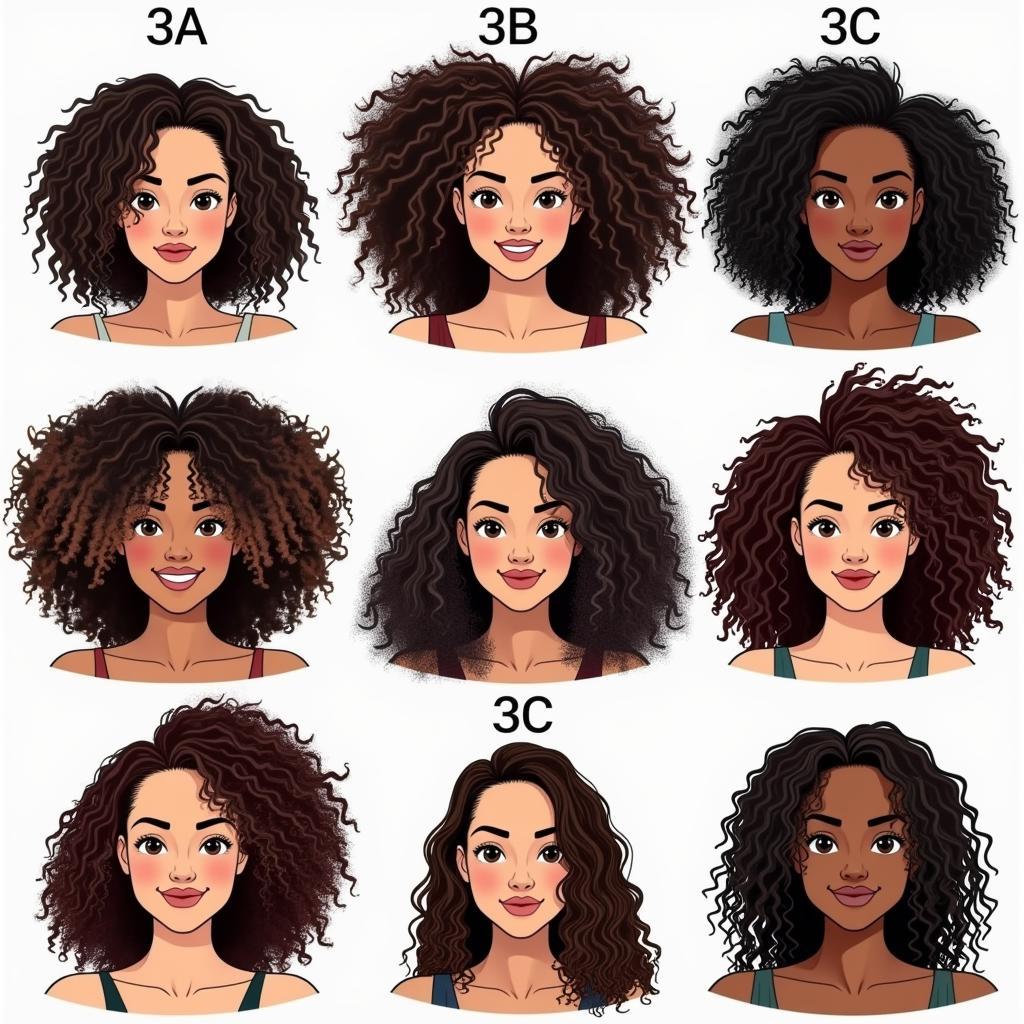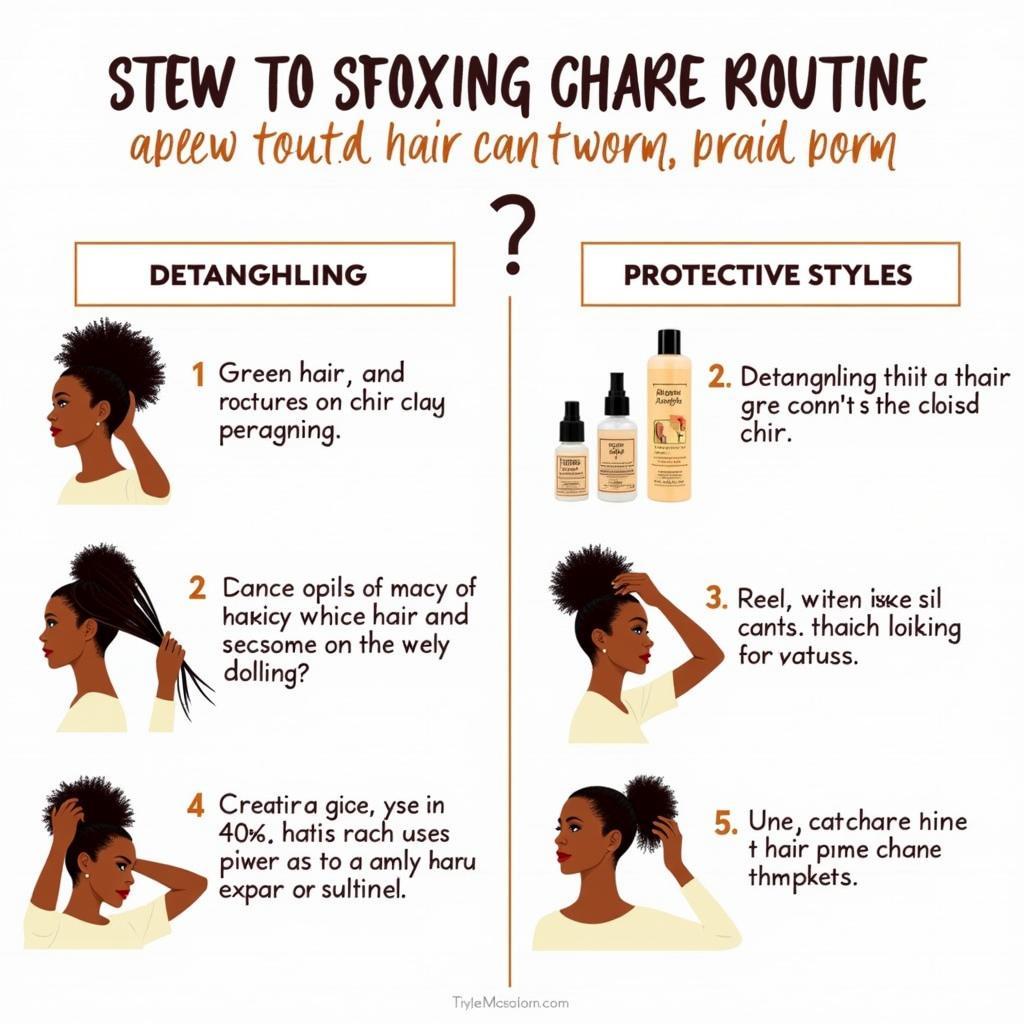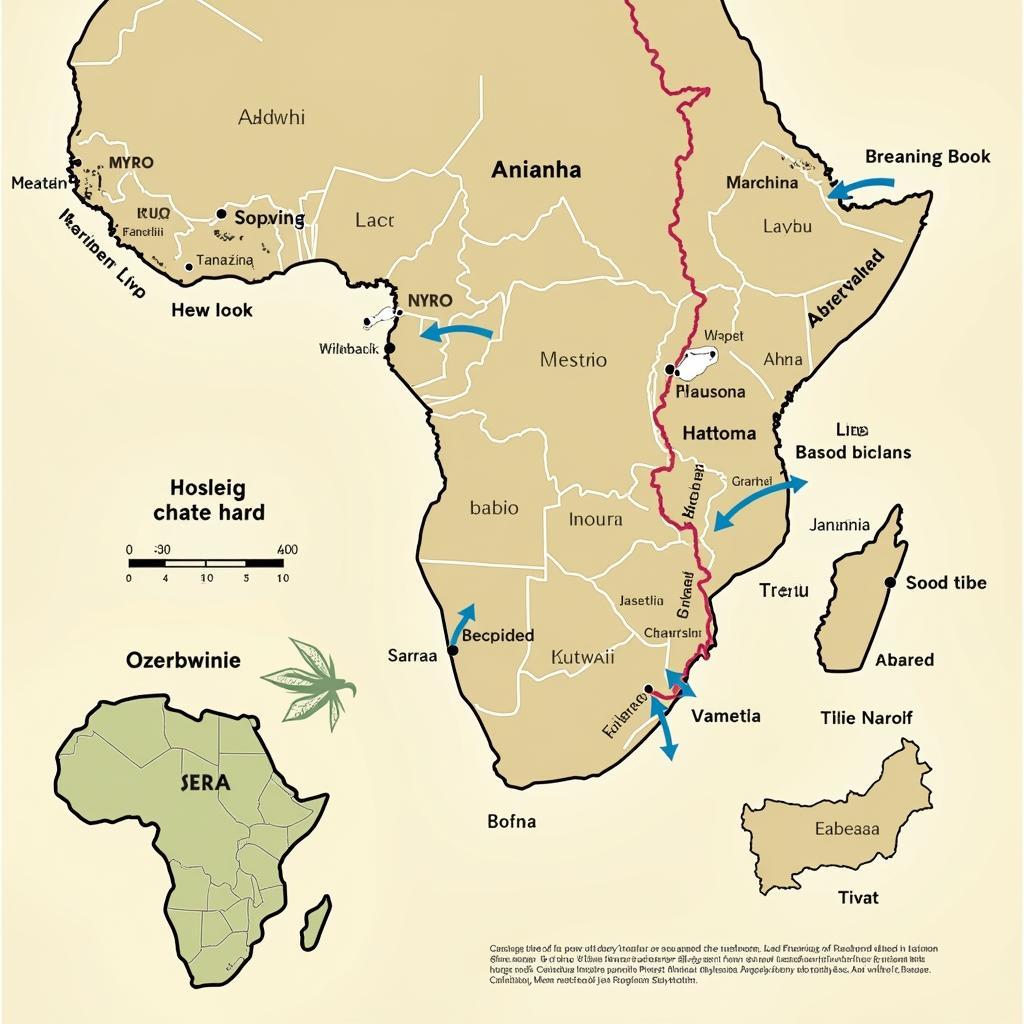Understanding African American Hair Types
African American Hair Types are diverse and beautiful, ranging from tightly coiled curls to looser waves. Understanding your specific hair type is crucial for choosing the right hair care products and styling techniques to maintain healthy, vibrant hair. This guide will delve into the different classifications, characteristics, and care tips for African American hair.
Check out these African curly hairstyles for inspiration.
The Different African American Hair Types
Hair typing systems, like the Andre Walker Hair Typing System, help categorize hair based on curl pattern, texture, and thickness. While not perfect, these systems provide a framework for understanding your hair’s unique needs. African American hair generally falls into Type 3 (curly) and Type 4 (coily) categories.
Type 3: Curly Hair
Type 3 hair is characterized by well-defined, springy curls. It tends to be drier than straighter hair types and requires regular moisturizing.
- 3A: Loose, defined curls resembling a spiral or “S” shape.
- 3B: Springy ringlets with a circumference similar to a marker or crayon.
- 3C: Tight corkscrew curls, densely packed together, with a circumference smaller than a pencil.
 Examples of Type 3 Curly Hair
Examples of Type 3 Curly Hair
Type 4: Coily Hair
Type 4 hair is tightly coiled, often appearing to shrink significantly when dry. It is the most fragile hair type and prone to dryness and breakage.
- 4A: Tightly coiled, “S”-shaped curls with a defined curl pattern.
- 4B: Z-shaped or zig-zag patterned coils with less defined curls and a fluffy appearance.
- 4C: Tightly coiled, densely packed hair with little to no defined curl pattern. It often shrinks significantly when dry.
Caring for Your African American Hair
Understanding your specific hair type is the first step towards establishing a healthy hair care routine. Here are some general tips:
- Moisturize regularly: African American hair tends to be drier, so moisturizing is crucial. Use deep conditioners and leave-in conditioners.
- Avoid harsh chemicals: Sulfates and other harsh chemicals can strip the hair of its natural oils.
- Protective styling: Styles like braids and twists can protect the hair from breakage and damage.
- Be gentle: Avoid excessive combing and brushing, especially when the hair is dry.
“Proper hydration is key,” says Dr. Anika Johnson, a certified trichologist. “Hydrating from the inside out by drinking plenty of water and using moisturizing products specifically designed for curly and coily hair is essential for healthy hair growth.”
Common Questions about African American Hair Types
What is the most common African American hair type? While variations exist, Type 4 hair is prevalent among individuals of African descent.
How often should I wash my hair? Washing frequency depends on hair type and individual needs, but generally, washing once or twice a week is sufficient. Over-washing can strip away natural oils.
What are some good products for African American hair? Look for products specifically formulated for curly and coily hair, with ingredients like shea butter, coconut oil, and jojoba oil.
Can I change my hair type? You cannot fundamentally change your natural hair type. However, you can manipulate it through styling and chemical treatments.
How can I prevent breakage? Gentle handling, regular moisturizing, and protective styling are key to preventing breakage.
What is shrinkage? Shrinkage refers to the apparent shortening of the hair length when it dries, particularly prevalent in Type 4 hair.
 Healthy Hair Care Routine Demonstration
Healthy Hair Care Routine Demonstration
Looking for more hairstyle ideas for African American women? Browse our African American female hairstyles gallery.
Conclusion
Embracing and understanding your African American hair type is essential for healthy hair. By following the right hair care practices and choosing appropriate products, you can maintain strong, vibrant, and beautiful hair. Remember to consider visiting African American barber shops in Atlanta GA for professional advice tailored to your hair type.
FAQ
-
What’s the difference between 4b and 4c hair? 4B hair has a defined “Z” shape, while 4C has a tighter, less defined curl pattern.
-
How do I determine my hair porosity? The float test can help determine your hair’s ability to absorb moisture.
-
What are some low-manipulation hairstyles? Protective styles like braids, twists, and buns minimize manipulation and reduce breakage.
Do you have questions about African American skin problems? Visit our dedicated page for more information.
For those interested in family portraits, our African family pics collection offers a beautiful glimpse into African family life.
Need further assistance with your hair care journey? Contact us at Phone: +255768904061, Email: [email protected] or visit us at Mbarali DC Mawindi, Kangaga, Tanzania. We have a 24/7 customer service team ready to help.

